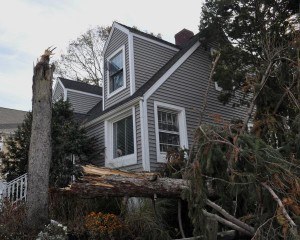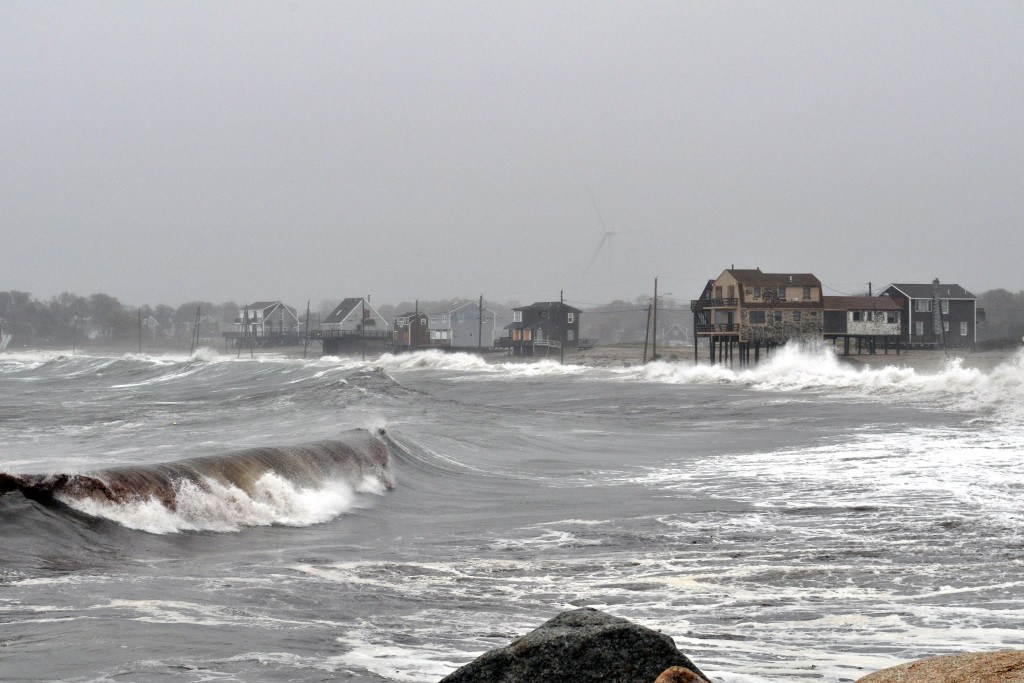After hundreds of homes were damaged or destroyed by storms raking Connecticut’s shoreline, a state task force recommended that local zoning codes be changed to reflect rising sea level and new flood elevations.
But changing zoning laws that might lead to restricted home building – or none at all – along the beach has been ruled out by state legislators as towns guard their lucrative source of property tax revenue.

Towns are instead looking at different ways to protect properties. Residents are applying stricter federal emergency management standards in rebuilding homes to withstand future storms and town officials will more aggressively seek insurance reimbursements to repair damage from storms last year and in 2011.
“Our highest taxpayers are obviously people along the water,” said Joseph Mazza, Guilford’s first selectman. “One could say you’d be eroding the future tax base.”
Guilford was among the first towns to put together a hazard mitigation plan, Mazza said. It includes a review of shore protection features to reduce repeated damage similar to what was caused by Irene and recommends structural improvements such as raising the bulkhead and rip rap shore protection, or stone facing.
Legislators are considering four bills that would change how property owners and local officials treat Connecticut’s shoreline. One measure would require more stringent water treatment plant design to qualify for state funding.
Another bill would require officials to consider a projected rise in the sea level of 2 inches to 5 inches per decade in planning for emergencies, evacuations and natural disasters. Still other measures call for studying federal and state information to establish a guide for Connecticut and a plan for a Connecticut Center for Coasts to collect and analyze data.
The task force established even before Superstorm Sandy made numerous recommendations, including the requirement that local zoning codes reflect sea level rise and new flood elevations.
But zoning didn’t make it into state legislation. It’s a local prerogative and Rep. James Albis, the House chairman of the Environment Committee, said forcing – or at least, prodding – zoning changes from Hartford is “certainly a concern” among local officials and their representatives at the Capitol.
“It’s probably one of the major reasons we need more discussion before we have actual legislation,” he said.
Fairfield First Selectman Michael Tetreau said changing zoning is not the biggest issue. The state can instead provide more grant money to help pay for work raising homes, he said. Even with flood insurance, federal emergency and small business grants, available money to raise homes is not sufficient, he said.
“I’m not comfortable that Hartford can manage local issues,” Tetreau said. “If you’re talking about local issues, why aren’t you talking to local officials?”
In flood zones, houses must comply with local flood plain management ordinances if the cost to repair damage exceeds half the value of the structure, excluding the value of the land, federal emergency management officials say. For example, the rule would apply to a $1 million house for which repair costs are greater than $500,000.
Nancy J. Rudek, zoning enforcement officer in Westbrook, said Federal Emergency Management Agency rules make it harder to rebuild and the agency changed flood maps to increase flood hazard areas. FEMA regulations were strengthened not in response to the storms, but to remain eligible for federal flood insurance, she said.
One result has been a large increase in houses raised above flood elevations, she said.
Westbrook officials say the town was spared much of the destruction that hit towns further west on Long Island Sound. “We dodged a major bullet in the last storm,” First Selectman Noel Bishop said.
David Sutherland, director of government relations at the Nature Conservancy and a member of the task force, said zoning changes may not be needed to protect homes, which can be raised to withstand storms in the future. But roads face flooding threats that can be lessened by zoning changes, he said. Under some circumstances, zoning can make a difference in shoreline land-use planning, Sutherland said.
Albis said state lawmakers could resurrect zoning changes in the future.
“The task force really started that conversation last year,” he said. “Sometimes it takes several years to pass legislation.”
Fillmore McPherson, Madison’s first selectman, said that if sea levels rise up to 5 inches a decade as state legislation anticipates, raising a house by several feet should be enough protection for decades.
“It’s something our children and grandchildren will have to worry about,” he said.
Was this article valuable?
Here are more articles you may enjoy.


 Johnson Controls Unit to Pay $750M to Settle ‘Forever Chemicals’ Lawsuit
Johnson Controls Unit to Pay $750M to Settle ‘Forever Chemicals’ Lawsuit  Dog-Related Injury Claim Payouts Hit $1.12B in 2023, Report Shows
Dog-Related Injury Claim Payouts Hit $1.12B in 2023, Report Shows  Property Restoration Industry: A Culture in Need of Repair?
Property Restoration Industry: A Culture in Need of Repair?  Supplemental Claims Don’t Need to Include Damage Estimates, Fed Appeals Court Says
Supplemental Claims Don’t Need to Include Damage Estimates, Fed Appeals Court Says 